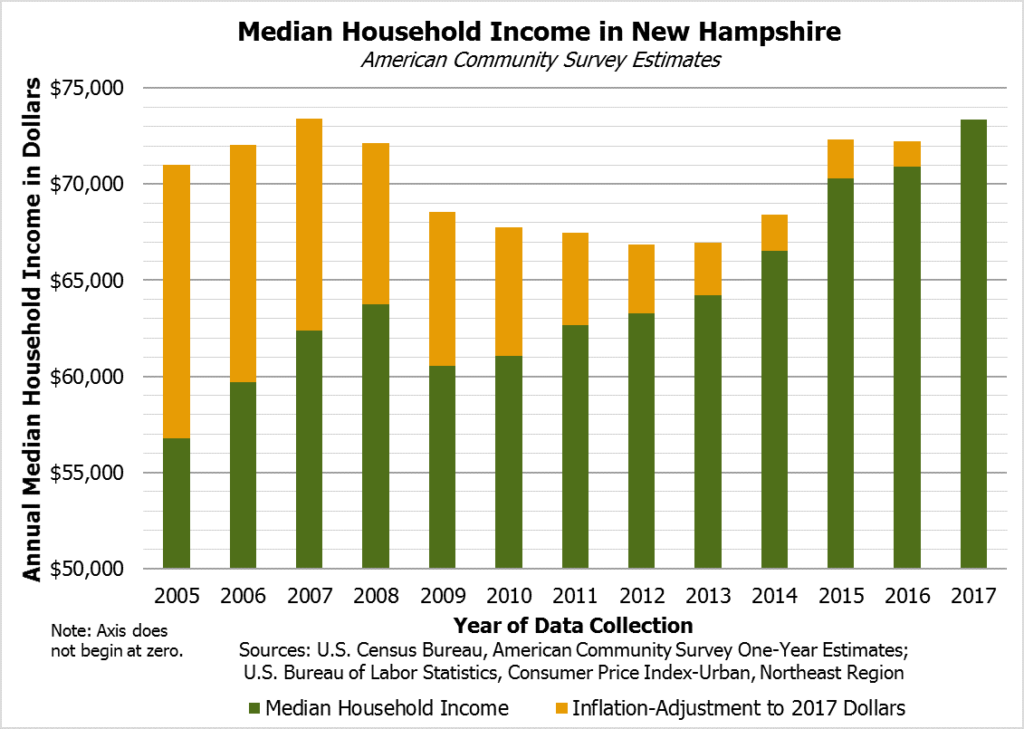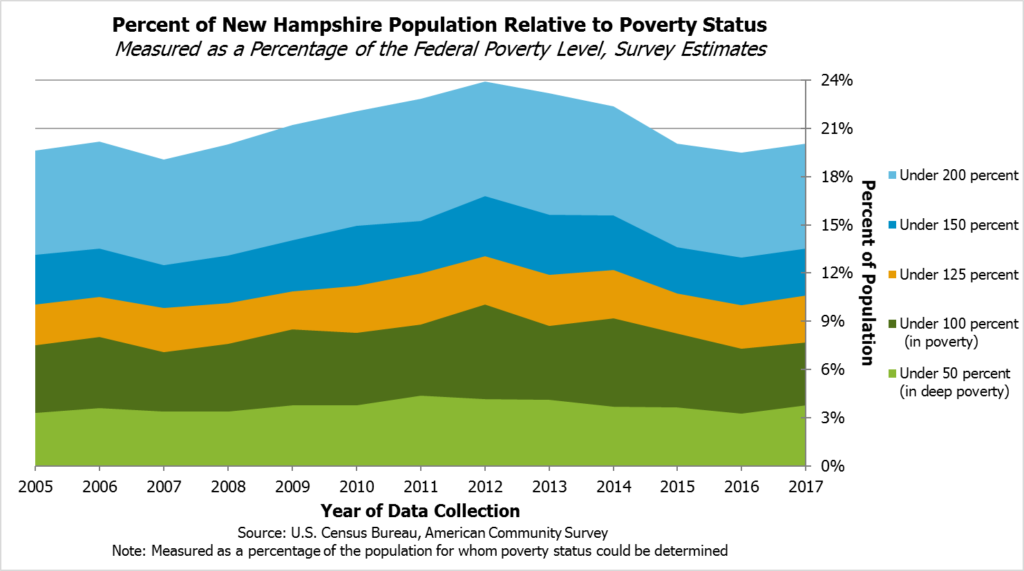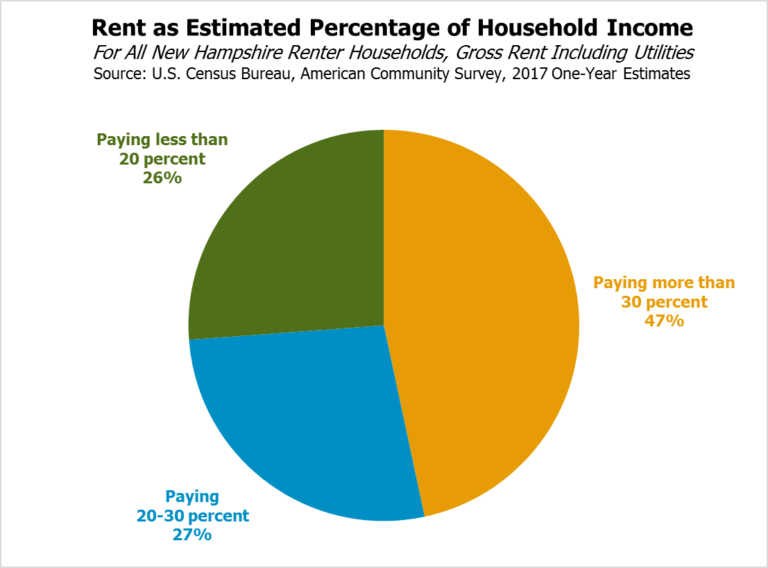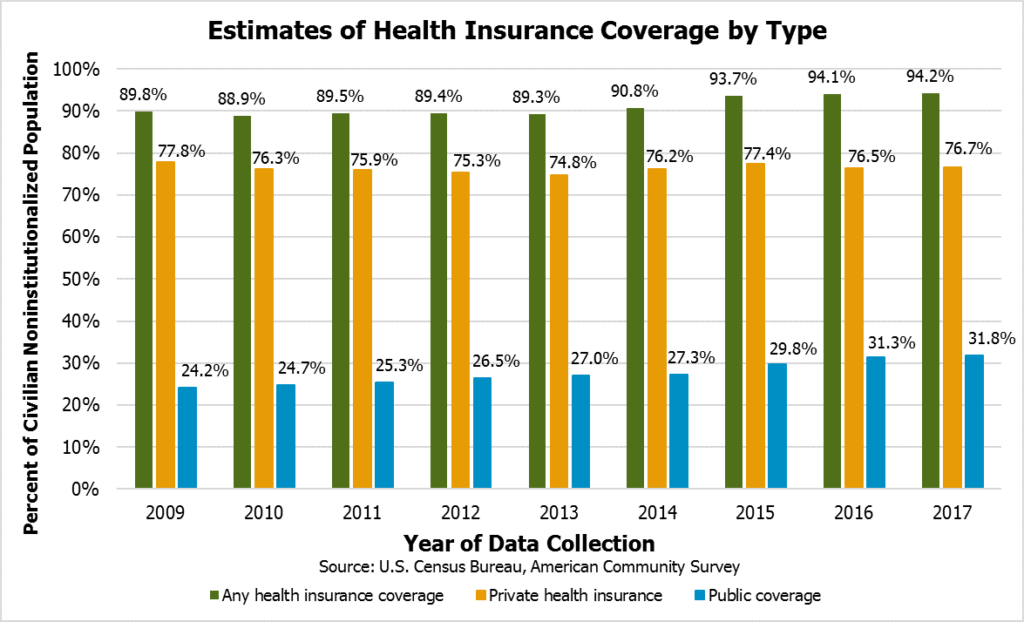The United States Census Bureau American Community Survey data released September 13, 2018 provides estimates, based on data collected in surveys conducted throughout 2017, of New Hampshire’s population characteristics. The survey data provide year-to-year comparisons of key indicators affecting the lives of Granite Staters.
Household Income
Median household income remained about the same for the data collected in 2017 as it did for 2016, at $73,381. While this figure is a nominal high, adjusting for inflation shows New Hampshire’s median household income has only recently returned to around the levels seen in 2007, prior to the Great Recession. This suggests economic growth in the last four years appears to have finally pushed median household income back to pre-Recession levels of spending power after years of falling behind. Relative to other states and the District of Columbia, New Hampshire has about the seventh-highest median household income, although uncertainty in the survey data renders the estimate statistically indistinguishable from Connecticut (#6), Alaska, (#8), and California (#9). More than one in five Granite State households had less than $35,000 per year in annual income, and around 22,000 households had less than $10,000 in income.
Poverty
New Hampshire’s poverty rate remained about the same, with an estimated 7.3 percent in the 2016 data and 7.7 percent in the 2017 data, which are within each other’s margins of error and both near to pre-Recession levels. However, the poverty rate for those under 18 years old rose from 7.9 percent to 10.3 percent, and the rate for those aged 65 and older rose from 4.6 percent to 5.8 percent relative to the 2016 data; both these rates are closer to 2015 data levels, suggesting 2016 data may have collected a sample underrepresenting certain poverty rates in the state, and progress on child and senior poverty may not have been as strong as indicated last year. The poverty-level income threshold for 2017 is $12,752 for an individual less than 65 years old and $19,730 for a family of three with one child. About 100,000 Granite Staters lived in poverty, which is roughly equivalent of the estimated 2017 populations of Concord, Rochester, Laconia, and Berlin combined. Around 49,000 people lived at less than half of poverty-level income, while 138,000 lived at less than 125 percent of poverty-level income and 260,000 lived under twice the poverty-level income.
Housing
For households that are renters, the Census Bureau measures gross rent, including utilities, as a percentage of household income. Gross rent exceeded 30 percent of household income, a common metric for affordability, for about 47 percent of all renter households. Median household income for renter households was estimated to be $41,868 in 2017. For renter households with incomes below $35,000, about three out of every four were estimated to be paying more than 30 percent of their annual income in rent, and about half were estimated to be paying half their incomes or more in rent.
Health Insurance
The percentage of Granite Staters with health insurance coverage remained roughly the same at 94.2 percent, higher than levels in 2014 and before the implementation of the federal Affordable Care Act and the New Hampshire Health Protection Program. About one in twenty Granite Staters lacked health insurance coverage in 2017.





